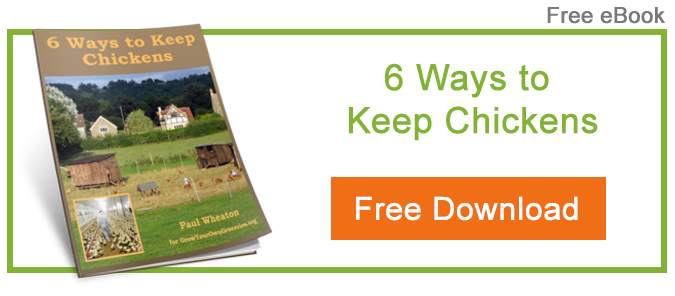Farm dogs get hurt—that’s a fact of life that nobody’s going to be able to change. No matter what your dog’s primary purpose is, getting hurt is something that just seems to be a normal part of their daily life on the homestead.
Herding dogs do some pretty intense, high-octane work, so they’re prone to muscle tears and joint injuries. Livestock guardian dogs have to fight off predators big and small, so they’re prone to bites and scratches.
Any farm dog is exposed to snakes, rusty nails and fence posts, and all the other dangerous things that come along with farm life. Here in central Texas, cactus spines, mesquite thorns, and sticker burrs are a daily threat. But if you live far from town, chances are that your farm dogs don’t see a veterinarian with any regularity.
Read More: “Is This Organic Animal Feed Good or Evil?”
A Valuable Trick From a Seasoned Goatherd
Marjory’s friend Avi Molnar is a veteran goatherd in Central Texas. He typically has between 8 to 12 dogs who are active in his fields at any given time. As you might expect, Avi’s dogs run into all kinds of problems, day after day. As a result, Avi has gotten pretty good at taking care of minor dog problems on his own.
Avi shared one trick with Marjory that has really helped her out with her own dog ailments. It’s a simple trick, but if you start practicing it early on, you’ll have an easier time dealing with your own dog problems. Whether you’re doing routine grooming, cleaning wounds, or digging out splinters and thorns, this trick will make your life a little bit easier.
The #1 Tip for Treating a Sick or Injured Dog
When Avi needs to work on an injured dog, he starts praising them immediately. He gives them treats, loving touches, and verbal praises to make them happy and help them to sit still. As soon as he starts working with the dog, the dog gets positive feedback and praise until the interaction is over.
Marjory has seen this trick work for Avi many times—for both minor tasks and some pretty difficult injuries. Avi’s dogs wait patiently while he takes care of what needs to be done. The trick works so well that Marjory started using it on her own dogs, and she has seen similar results.
Here’s Marjory to tell you about it herself:
What’s your best tip for taking care of a sick or injured dog (or other farm animal)? Let us know in the comments!


The Grow Network is a global network of people who produce their own food and medicine. We’re the coolest bunch of backyard researchers on Earth! We’re constantly sharing, discovering, and working together to test new paths for sustainable living—while reconnecting with the “old ways” that are slipping away in our modern world. We value soil, water, sunlight, simplicity, sustainability, usefulness, and freedom. We strive to produce, prepare, and preserve our own food and medicine, and we hope you do, too!








COMMENTS(3)
I had learned that with my service dog, who after 11 years of helping me, died of bone cancer. He was an OES. I am now looking for a new dog that will be quiet and focused. What kinds of dogs does Avi have? And does he breed his own?
Labrador Retrievers, and Golden Retrievers are quiet, and learn quickly. Non aggressive too. Cross bred with heavy on either of these breeds will likely be a great dog to choose, and serious training should begin at around age 2 to 4 years. A rescue of such a mixed breed will be intelligent, learn fast, and never forget you saved her life! Trainers generally recommend a spayed female too. Hope that helps.
Don’t rush! Go and look at dogs being “rehomed” or puppies, and “feel a connection” with the one for you. There is an instantaneous vibration that occurs between a dog and a human that will identify the “right dog” for you. Have someone who is competent at muscle testing check for this. If you pay them for their time it is WORTH it! This is a 10 year commitment. Divide the “fee by 10 and you will see how cheap it is to get the right one! You won’t regret it!
Marjory, I watched you go thru your snake bite and ordered the video by Doug Simons. My dog was snake bit (for the second time in two years) and I know dogs can usually survive the snakes we have in this area (copperhead), but I took the opportunity to use the poultice method you and Doug explained. I have prickly pear and lots of aloe plants. The aloe was easier, so more of that was used, the dog recovered in less than twelve hours and I got some skills along the way. Thanks! Tina